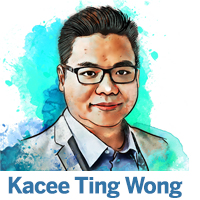At a time when the financial deficit and geopolitical rivalry are still bubbling beneath the surface calm of the city, Xia Baolong, director of the Hong Kong and Macao Affairs Office, conducted an inspection of two special cooperation zones jointly operated by Hong Kong and Shenzhen recently. Xia’s inspection tour and the messages he conveyed to local officials will hopefully guide the city beyond its short-term challenges to long-term prosperity.

 On Feb 9, Xia inspected the Hong Kong Park of the Hetao Shenzhen-Hong Kong Science and Technology Innovation Cooperation Zone (Hetao zone), followed by a visit to the Qianhai Shenzhen-Hong Kong Modern Service Industry Cooperation Zone (Qianhai zone). He received briefings from Secretary for Development Bernadette Linn Hon-ho on the development of the Northern Metropolis and Secretary for Innovation, Technology and Industry Sun Dong on technology development in the city, and had a discussion session with Financial Secretary Paul Chan Mo-po during the tour.
On Feb 9, Xia inspected the Hong Kong Park of the Hetao Shenzhen-Hong Kong Science and Technology Innovation Cooperation Zone (Hetao zone), followed by a visit to the Qianhai Shenzhen-Hong Kong Modern Service Industry Cooperation Zone (Qianhai zone). He received briefings from Secretary for Development Bernadette Linn Hon-ho on the development of the Northern Metropolis and Secretary for Innovation, Technology and Industry Sun Dong on technology development in the city, and had a discussion session with Financial Secretary Paul Chan Mo-po during the tour.
The Hetao zone is one of the major cooperation platforms involving Guangdong province, Hong Kong and Macao under the national 14th Five-Year Plan (2021-25), with three major roles: a pilot zone for Shenzhen-Hong Kong cooperation in technology and innovation, a testing zone for new rules on international advanced technology and innovation, and a cluster for pilot production and transformation for the Guangdong-Hong Kong-Macao Greater Bay Area.
Xia’s inspection tour is expected to strengthen Hong Kong’s determination to boldly pursue reform and innovation, while stepping up cooperation and collaborative development within the Greater Bay Area. Sun emphasized that the Hetao zone is a crucial platform for forging new quality productive forces.
Xia’s inspection of the Qianhai zone reminded Hong Kong businesses that they should have a firm understanding of their roles in the Greater Bay Area, and the central government’s initiative to integrate Hong Kong, Macao and nine mainland cities in the region into an economic and business powerhouse. The modern service industry in the Qianhai zone should move into a higher gear to expand its international connections and achieve greater achievements on the international stage. The development of the Hetao and Qianhai zones can help revitalize Hong Kong’s economy and hedge against geopolitical risks.
According to Lau Siu-kai, a consultant at the Chinese Association of Hong Kong and Macao Studies, cross-border projects are key to Hong Kong’s economic development and industrial diversification, and also help mainland companies expand internationally. In addition to participating in the two cooperation zones in Hetao and Qianhai, mainland companies can also play a bigger role in developing large cross-border projects, partly because of the financial deficit in Hong Kong and the cautious attitudes of local developers.
It is worth noting that the central government is preparing its next five-year national development plan. The visionary strategy to turn 11 cities in the Greater Bay Area into an economic powerhouse remains crucial. In addition to fostering deeper integration with the region, Hong Kong should also make good use of the unique institutional advantages of the “one country, two systems” policy to play the role of superconnector to attract more mainland and overseas companies to invest or list here
First, we look at the financial constraints faced by the Hong Kong Special Administrative Region government. In December 2024, Chief Executive John Lee Ka-chiu reported to President Xi Jinping that his administration will strive to return to a balanced budget in the next three to five years. But economist Simon Lee Siu-po said it will be impossible to restore a balanced budget in three years given the city’s longstanding reliance on income from land sales to pay for its recurring expenses. Therefore, the SAR government should invest cautiously in infrastructure projects in the Northern Metropolis. To solve the “Dutch disease”, whereby one becomes too reliant on one sector, the emphasis on industrial diversification is a step in the right direction. Xia’s inspection of the Hetao zone serves as a reminder of the importance of such a strategy.
Second, Hong Kong developers last month urged authorities to minimize investment risks in the Northern Metropolis project, saying in a meeting that they needed more timely infrastructure and flexibility on building regulations. In a closed-door meeting across the border in November, Xia told Hong Kong developers to recognize their responsibilities and act decisively to support the city’s development. But the response from developers has been far from encouraging. Mainland companies, that have set their sights on cross-border projects can play a more significant role in developing the Northern Metropolis. We hope Xia’s inspection tour has sent a positive signal to interested mainland enterprises.
Xia also visited Yantian Port in Shenzhen to examine the collaboration among ports within the Greater Bay Area. We are confident that the central government will formulate a long-term collaborative port development strategy that promotes the mutual advantages enjoyed by major ports in the region. According to Rock Chen Chung-nin, a Hong Kong lawmaker, Xia’s visit to Yantian underscored the central government’s expectation that Hong Kong could strengthen its role as an international shipping hub.
It is preferable to have more regular communicative channels between the central government and Hong Kong, which encourages the city to approach national authorities rather than waiting to be approached. Xia’s inspection tour provided an invaluable opportunity for local officials to gain a better understanding of the objectives of national strategies, as well as clear advice and guidance on formulating effective policies in line with the expectations of the central government. In a sense, it also underscored the urgency of Hong Kong stepping up efforts in tackling challenges and promoting development.
As acting chief executive Eric Chan Kwok-ki pointed out, Xia gave clear instructions on how the SAR could align itself with national development. Chan described Xia as being extremely concerned about the city, weighing in on the SAR’s plans for its economy and giving guidance on how the city could integrate into national development policies.
It is worth noting that the central government is preparing its next five-year national development plan. The visionary strategy to turn 11 cities in the Greater Bay Area into an economic powerhouse remains crucial. In addition to fostering deeper integration with the region, Hong Kong should also make good use of the unique institutional advantages of the “one country, two systems” policy to play the role of superconnector to attract more mainland and overseas companies to invest or list here. Last year, a record 9,960 firms from the mainland and overseas set up offices in the city.
Janet Lin Cai-ying is chairperson of Friends to Community Building, co-director of district administration at the Chinese Dream Think Tank, and a district councilor.
Kacee Ting Wong is a barrister, part-time researcher at Shenzhen University Hong Kong and Macao Basic Law Research Center, chairman of the Chinese Dream Think Tank, and a district councilor.
The views do not necessarily reflect those of China Daily.


